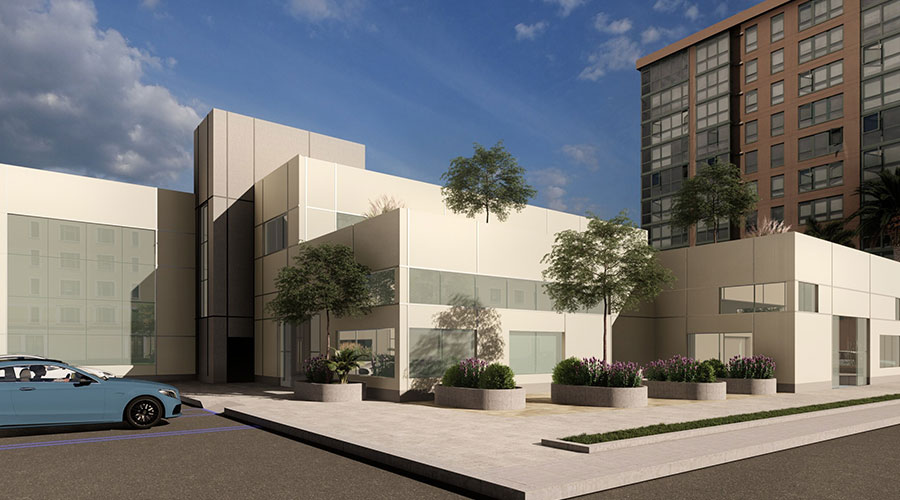A growing trend in healthcare facility design is to make these settings feel more like home and less clinical. There are purported benefits to this, as it may help with patient recovery and quality of care.
Healthcare Facilities Today recently spoke with Cullen McCann, AIA, architect and project manager at Bockus Payne, about how healthcare settings can be designed to resemble homes.
HFT: How can healthcare facilities be designed to feel less clinical and more like home?
Cullen McCann: It is about the finishes and the resemblance of volume and space. There is a growing trend in the market for healthcare facilities to embrace a more home-like feel. I think that is what the larger, more sophisticated institutions are starting to understand that quality of care itself has different meanings. That is, that it is not just getting an accurate diagnosis or prognosis, but it is now becoming how the patient feels when they are there. Also, science is becoming more conclusive about how it affects patients’ recovery times.
They are finding out that now patients like being at home, and the more they can feel comfortable in a home-like environment, the better their care will be in the perception while they are there. It is largely about making the patient's room and even the facilities themselves more home-like. This is in the residential sense, think soft plush furnishings, ceiling fans and natural lighting and a few less tubes and hoses.
When it comes to the systems inherent to hospitals that are needed to provide the care, they are becoming more minimized, less visible, less obvious. Things are now concealed behind doors and things that look like cabinetry. So, if the nursing staff needs to take care of that patient, they can access those medical systems, but they are not just hanging out there in the open all the time.
HFT: What home-like aspects could be incorporated into healthcare settings to reduce stress and soothe occupants?
McCann: In a similar vein, it is also about the nature of the finish’s quality. There is a growing concern for infection control with the finishes being challenged to be both home-like and comfortable, yet very cleanable. These two agendas are sometimes at odds with each other, however, it is both an environmental and operational approach.
Also, we have known for quite some time that hospitals are becoming more in tune with the fact that patients quite often want their families with them. So, having accommodation for a family in the room is a big component of that home-like nature. With accommodation for a family comes more than just the small sofa in the corner that folds out into an emergency bed. Nowadays, you must think more about living room spaces, shared living spaces, shared kitchenettes and nourishment areas where family can visit. It also can be a space where they can potentially work while they are visiting their loved one in the hospital.
Related: Human-Centered Design Can Redefine Physical Spaces
HFT: How can privacy concerns be addressed in healthcare facility design?
McCann: One way is the privacy swing door so that when in the natural course of opening the door, it naturally screens the patient from view from the corridor. This is because the bed or the place where the patient resides is often behind and around the door. These doors are common now as good practice.
For additional privacy, especially in areas where privacy needs to be managed very carefully for the integrity and the best interest of the patient, you can use privacy curtains. You can also use the way that the room is configured to discourage line of sight views.
Ultimately, privacy is like infection control in the sense that hospital administrations and institutions are trying to find that right balance between protecting patient privacy and making sure the patient is accessible to the care of the nursing staff in case of emergency.
HFT: What natural elements could be used to make a healthcare facility feel more like home?
McCann: The guidelines that govern inpatient facilities, outpatient facilities and hospital grade facilities will already require certain things that are known to be in the best interest of the patient. For example, a patient room must have a certain square number of window area for natural lighting.
Design should also consider views from the space outside. Beyond that we should consider direct and indirect lighting, landscaping and other environmental factors like that just to optimize the experience that the patient could have.
While maybe not completely natural, it is also very common these days to see stress relieving elements inside a patient room like ambient noise control, water features and things like that, that are known to be stress reducers and encourage reduced anxiety.
Jeff Wardon, Jr. is the assistant editor for the facilities market.

 How Healthcare Facilities Can Be Truly Disaster-Resilient
How Healthcare Facilities Can Be Truly Disaster-Resilient TriasMD Breaks Ground on DISC Surgery Center for San Fernando Valley
TriasMD Breaks Ground on DISC Surgery Center for San Fernando Valley Bigfork Valley Hospital Falls Victim to Data Breach
Bigfork Valley Hospital Falls Victim to Data Breach AI-Driven Facilities: Strategic Planning and Cost Management
AI-Driven Facilities: Strategic Planning and Cost Management  Double Homicide Suspect Hides from Police in Upstate Community Hospital
Double Homicide Suspect Hides from Police in Upstate Community Hospital